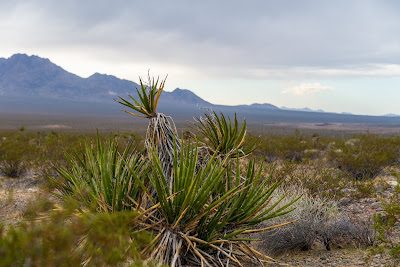BLM Lifts Hold on Ivanpah Construction but Hurdles Loom
The Bureau of Land Management (BLM) lifted a stop-work order on BrightSource Energy's Ivanpah Solar Energy Generating System last week, but a legal challenge still hovers over the solar project. BLM halted work on most of the site in April after new estimates showed that the project could kill or displace hundreds of tortoises on the 5.6 square mile site and adjacent lands. According to government documents:
After reissuing the biological opinion, the BLM determined that despite the project tortoise deaths, the project will not "jeopardize" the threatened desert tortoise. Desert biologists disagree, and are concerned that the Ivanpah Valley's robust and healthy tortoise population will be critical to the species recovery throughout its range.
Legal Challenge on the Horizon
BrightSource Energy is still facing the repercussions of its decision to build on pristine habitat. Western Watersheds Project filed a legal challenge against the Federal government's faulty environmental review of the project, and the court is expected to rule soon on a requested injunction that would halt construction.
Other solar power projects face similar challenges. A Federal judge already halted plans to build the Imperial Valley Solar power project in December, finding that the government's hasty review process lacked appropriate consultation with the Quechan Native American tribe. Also, the Calico Solar power project in the central Mojave Desert proposed by K Road Sun has drawn the ire of the Sierra Club, Defenders of Wildlife, and BNSF Railroad. BNSF filed a strongly worded complaint with the California Energy Commission (CEC), asking them to revoke approval of the project, alleging that the solar company misrepresented facts to gain approval and apply for Federal grants and loans.
"We anticipate that construction of the [Ivanpah] project site is likely to take, in the form of mortality or injury, between 405 and 1136 desert tortoises... We anticipate that the vast majority of these will be individuals of smaller size or desert tortoise eggs that are difficult to detect during clearance surveys and construction monitoring; therefore, we are unlikely to find carcasses of these individuals."
After reissuing the biological opinion, the BLM determined that despite the project tortoise deaths, the project will not "jeopardize" the threatened desert tortoise. Desert biologists disagree, and are concerned that the Ivanpah Valley's robust and healthy tortoise population will be critical to the species recovery throughout its range.
Legal Challenge on the Horizon
BrightSource Energy is still facing the repercussions of its decision to build on pristine habitat. Western Watersheds Project filed a legal challenge against the Federal government's faulty environmental review of the project, and the court is expected to rule soon on a requested injunction that would halt construction.
Other solar power projects face similar challenges. A Federal judge already halted plans to build the Imperial Valley Solar power project in December, finding that the government's hasty review process lacked appropriate consultation with the Quechan Native American tribe. Also, the Calico Solar power project in the central Mojave Desert proposed by K Road Sun has drawn the ire of the Sierra Club, Defenders of Wildlife, and BNSF Railroad. BNSF filed a strongly worded complaint with the California Energy Commission (CEC), asking them to revoke approval of the project, alleging that the solar company misrepresented facts to gain approval and apply for Federal grants and loans.
"BNSF has been harmed and prejudiced by Applicant's submissions based upon a technology that is not now commercially viable and available. BNSF has expended and continues to expend substantial resources, both human and monetary, and to incur expert and legal fees to address significant health, environmental and operational concerns arising from the Commission's processing and approval of the Calico Solar SunCatcher Project. BSNF should not be required to take actions to ensure the safety of its employees, agents and operations against the effects of a hypothetical solar generation facility dependent upon a technology that is not commercially viable or available, even as we speak."Both the CEC and the Federal government approved the 7 square mile Calico proposal last year even though the company never had the ability to build the project in the first place, and it chose a site that provides critical habitat for rare species of plants and wildlife. If built, the project's mirrors could blind train engineers crossing the remote desert, and create other hazards to the daily operations of the railroad.
 |
| Both the Ivanpah and Calico Solar projects are projected to have major impacts on desert tortoise, and deprive them over several square miles of prime habitat. |


I was looking for information about production flare stacks and I'm glad I came across this page. I couldn't thank you enough. Cheers!
ReplyDelete